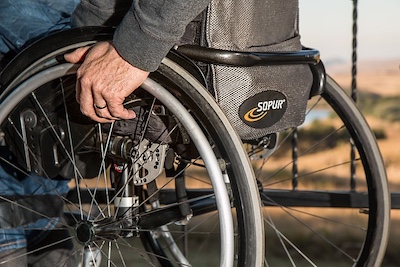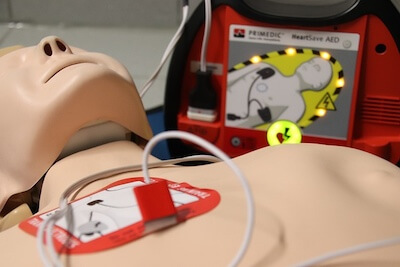Organizational Coaching to Improve Safety at the Smaller Nonprofit
- Home
- Small Nonprofit Practices
- Organizational Coaching to Improve Safety At the Smaller Nonprofit
Organizational Coaching to Improve Safety at the Smaller Nonprofit is a practical continuation on from Part One.
It allows you to reflect on your organization, the attitude it has toward safety, and the actions it has taken to ensure the safety of participants, staff, and the public.
In this particular area, we can always make improvements or increase preparedness.
Will it mean we reach "perfect?" Probably not. We just can't anticipate or plan for everything. But we can have an attitude that appreciates risk and values doing what we can to ensure safety.
77. Government and industry safety
standards are met or exceeded

This is Practice 77 of 80
Government and organizations in your special area of service have established standards that will ensure a high quality of conformance to safe and well run facilities.
You have those standards at hand and regularly check yourself against them. You have been inspected at regular intervals by these governing bodies, and have acted on any recommendations right away.
- What appropriate standards organization do we belong to?
- What do they offer us that can help us?
- How well have we implemented their recommended standards?
- Are we beyond reproach in our inspections, and actions on recommendations?
Why This Practice Is Important to Me as a Christian Coach
By paying attention to industry safety standards and ensuring that they are met or exceeded, staff and participants alike will enjoy a greater level of confidence and peace of mind. Attention to standards is not only good business, it is good ministry.
I've heard it argued that "Christians" don't need standards. God gives us standards. BUT, if we are so sensitive to God's standards, our operations will surely meet secular standards. God has put these authorities in place so that we can run safe organizations that serve the public.
Don't be so self-righteous. Maybe your organization could use improvements that God offers through secular organizations.
The Key Concept, Attitude or Action That Drives This Practice
ATTENTION
An Expansive Thought
If the government standards are the base level, what are we doing that reaches beyond? Become the standard against which others wish to measure.
An Action Point
Set specific goals to reach beyond industry base standards. Become the base line for others to reach toward.
78. Insurance
coverage meets or exceeds the industry standard

This is Practice 78 of 80
With good insurance programs available to organizations, there is little excuse for neglect in being well insured. Walk your representative through every activity and location you have. Make sure it is covered.
Set up your own self-insurance reserve to lower the deductible if need be. Be prudent. Get good advice in this area. Lawsuits happen – you may never have one but then again YOU MAY.
- Are we getting the best possible coverage for the best rate?
- What traditionally drives our insurance decisions - cost, coverage or something else?
- What attitudes might need to be changed?
Why This Practice is Important
In order to protect your investment and your participants, it is vital that any facilities and operations be adequately insured for public use.
A good insurance policy will provide the security to be able to continue your mission after an incident or crisis. In addition to their policy, some organizations also begin their own "self-insurance" reserve, so they have funds to cover most damages and not have to go to insurance.
The Key Concept, Attitude or Action That Drives This Practice
SECURITY
An Expansive Thought
Is loyalty, assumptions, or some other reason causing us to avoid things we should be looking at? To be well insured acknowledges what is, and not what is to be avoided.
An Action Point
Take out your calendar and schedule the time needed to assess and review your current coverage against what you really need.
79. Designated staff supervises safety procedures

This is Practice 79 of 80
Someone is in charge. Designated staff supervise safety procedures.
Find people who are willing, knowledgeable and capable of carrying this important area forward. Fund it. Recognize it as being as important as any other program you may have taking place.
- What people would be eager to take this on as their priority?
- How could they best work together with others?
- What would the structure look like to support this happening?
While safety is the responsibility of all, a good designated team can make your safety program and procedures work.
Why This Practice Is Important
The implementation of safety procedures must be carried out by a knowledgeable team in order to assure that the program will be effective. Delegating safety directorship to the right people is important – pick carefully.
The Key Concept, Attitude or Action That Drives This Practice
DELEGATION
An Expansive Thought
How can we facilitate this? Should we create a position for a Director of Safety? Something else?
An Action Point
Ensure that once a team is in place, you take it full circle by providing the necessary safety procedure training.
Have these key people consistently upgrading knowledge and skills. Taking time to plan goes a long way; training and empowering good people goes even further.
80. Safety is a priority, not an option

This is Practice 80 of 80
Overall safety goals are being reached.
An "attitude of safety" is looked at and presented as a long-term investment in people.
- Is attention to safety part of our image to the public?
- Should it be?
- If so, how could we accomplish not only having the reality but reflecting the reality?
- If asked, would any member of our staff refer quickly to the importance of safety?
Why This Practice is Important to Me as an Executive Coach
A safety consciousness, consistent over time, means you will have returning participants and staff because they have confidence in safety systems the organization has implemented.
In my coaching, safety, like many other important things, is first of all a mindset. And, mindset is something I discuss almost every day with clients.
The Key Concept, Attitude or Action That Drives This Practice
ATTITUDE
An Expansive Thought
Within the context of safety, the challenge and risk of any experience will be long remembered. What if safety wasn’t a priority, but a total environment within which we moved?
An Action Point
How can we ensure that staff understands the importance of safety as well as the act of conveying that attitude toward participants and public?
This is the end of Organizational Coaching to Improve Safety at the Smaller Nonprofit
To go back and review Part One of Safety, click here.
How Have You Applied What You Learned from Organizational Coaching to Improve Safety at the Smaller Nonprofit?
As you take action on the four practices from Organizational Coaching to Improve Safety at the Smaller Nonprofit, and the four practices from Part One, you will have gone some distance to developing a safety consciousness for your organization.
If you've taken action, you are to be congratulated. Accidents happen. Crisis develop. But whatever we can do to mitigate that happening if of first priority. And being as ready as possible should it happen is crucial. Be prepared.
Contact me here Privacy Policy
© G.E.Wood and Associates. All Rights Reserved in all media.
G.E. Wood and Associates is an international coaching firm registered in Ontario, Canada
142 Pratt Crescent, Gravenhurst, Ontario, Canada, P1P 1P5